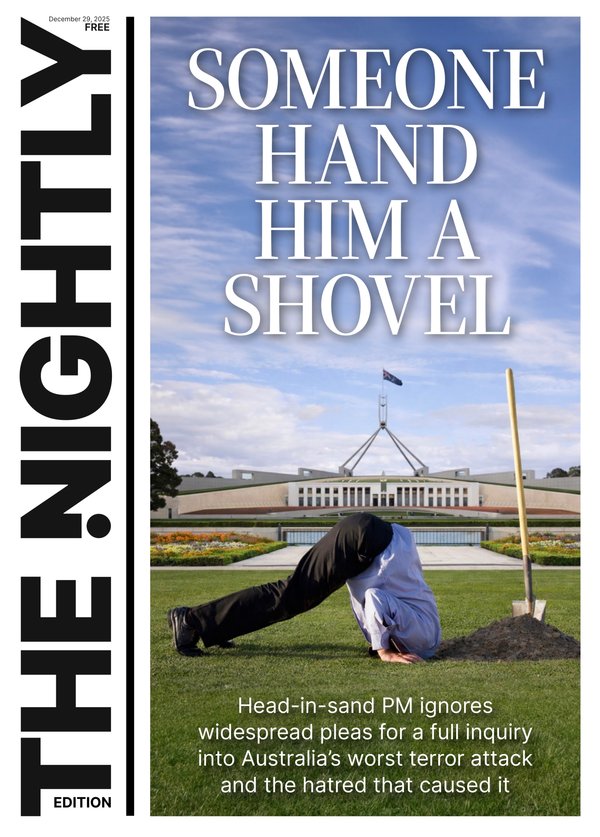Federal election 2025: Major parties barely fend off independent challengers

The major parties appear to have held on to formerly safe seats by the skin of their teeth, but a handful of other electorates remain too close to call.
Australians handed Labor a sweeping federal election victory, but several former strongholds looked poised to slip from the party’s fingers after independent challengers took the results down to the wire, with less than 100 votes separating the frontrunners at times.
But one by one, they fell back into the fold, and on Monday the ABC called the south Canberra and Norfolk Island seat of Bean for Labor candidate David Smith , after a days-long fight against independent Jessie Price.
Sign up to The Nightly's newsletters.
Get the first look at the digital newspaper, curated daily stories and breaking headlines delivered to your inbox.
By continuing you agree to our Terms and Privacy Policy.Ms Price hasn’t conceded defeat, noting there were still a few thousand votes to count, but she acknowledges a win looked less likely.
“Votes are now coming from people outside of the electorate who maybe weren’t quite as aware that we had such a different option this election,” she told ABC Radio on Monday.
“Labor have kind of held on by their fingernails at the end and they are on notice.”
The blue-ribbon electorate of Bradfield on Sydney’s north shore has also gone to a major party after days of counting, with Liberal candidate Gisele Kapterian fending off independent Nicolette Boele.
It wasn’t all bad news for independents.
The ABC has called the Melbourne seat of Kooyong for Monique Ryan, giving her a second term.
Meanwhile, the Greens have held on to one seat in the lower house after Elizabeth Watson-Brown, the MP for Ryan, beat her Labor challenger.
According to the ABC, another four seats remain in doubt, including the southeast Melbourne electorate of Flinders, which was challenged by independent Ben Smith.
Monash in eastern Victoria and Longman in Queensland are too close to call, as is Calwell on Melbourne’s fringe, where the final pairing of candidates is hard to determine.
In the Senate, the coalition appears poised to lose up to five seats to Labor.
This could give Labor and the Greens the power to pass legislation without turning to other members of the crossbench.
SEAT COUNT IN 2025 FEDERAL ELECTION:
THE NUMBERS
- Labor - 93 lower house seats (+16 from 2022 election total) as of Monday morning, with 83.5 per cent of votes counted
- Coalition - 41 seats (-17)
- Greens - 1 seat (-3)
- Independents/minor parties - 11 seats (-1)
- Undecided - 4 seats
- In the Senate, Labor could gain up to five spots from the coalition, with about 76.1 per cent of the upper house ballots counted as of Monday morning
WHERE THE COUNT IS UP TO
- Labor has 54.67 per cent of the two-party national count with 6,217,274 votes, an increase of 2.54 per cent, the Australian Electoral Commission says
- The Liberals have 45.33 per cent of the national vote with 5,155,522 ballots
SEATS STILL IN DOUBT
Calwell (Vic) - Labor candidate Basem Abdo leads the outer Melbourne electorate with just over 30 per cent of first preference votes, but two independents with about 12 per cent each make this seat highly complicated. There is a possibility Carly Moore or Joseph Youhana could snowball up preferences and overtake Mr Abdo in the final tally.
Longman (QLD) - Labor’s Rhiannyn Douglas leads LNP MP Terry Young by 219 votes with almost 85 per cent of the ballots counted.
Monash (Vic) - Liberal candidate Mary Aldred appears to have the edge in the regional Victorian seat with 32.1 per cent of the primary vote, but the presence of two strong independents - Deb Leonard and Russell Broadbent - complicate the preference distribution.
Flinders (Vic) - Liberal MP Zoe McKenzie has secured a commanding 41.4 per cent of the primary vote but her lead could be at risk if independent Ben Smith finishes in second ahead of Labor’s Sarah Race and soaks up Labor and Greens preferences.

